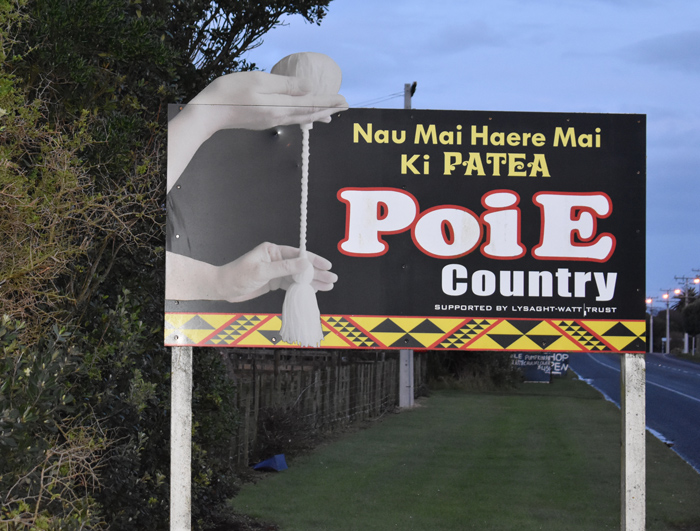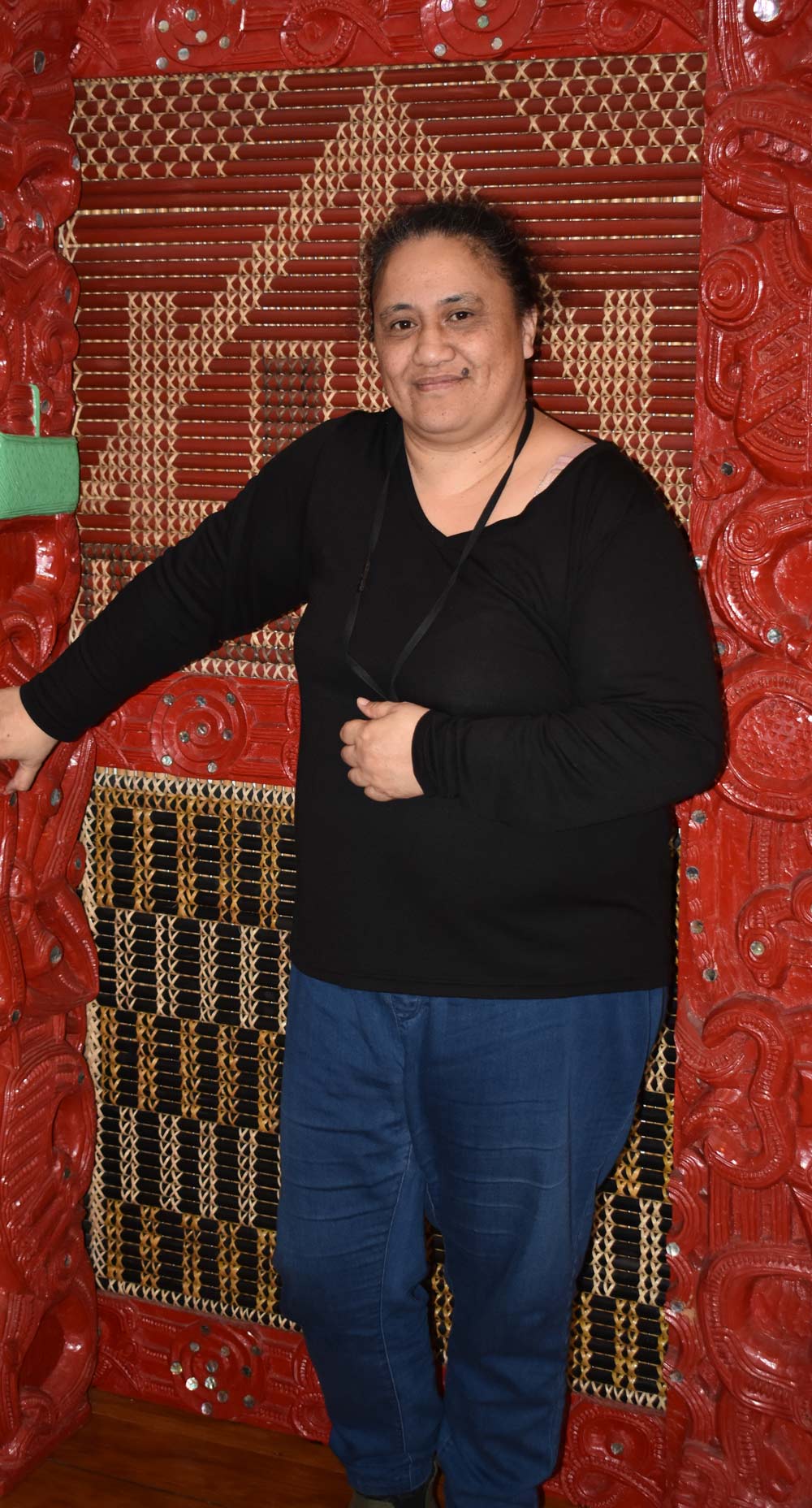
Culture Etc.

Above: Luana Paamu. Photo: Lindsay Wright.
Precious Cargo
Pātea, where the Tasman Sea has pummelled and caressed the shoreline for centuries, hosts a hoard of special taonga.
By Lindsay Wright
Because steel and iron outlast raupō and rimu, and the written word is considered to be more reliable than oral history, some rural museums become collections of old agricultural machinery in various states of decrepitude.
But Pātea, the town in South Taranaki where the eponymous river reaches the sea, has a treasure trove of artefacts that may reach all the way back to Hawaiki.
The waka Aotea, with rangatira Turi in charge, landed at Aotea Harbour, further north, and Turi settled his Ngāti Ruanui and Ngā Rauru people in the fertile Pātea area. Many locals are descendants of those who travelled in the waka.
New Zealand’s oldest wooden artefacts are on display at Aotea Utanganui — Museum of South Taranaki in Pātea. The blackened wooden implements are carbon dated to the 14th century.
Taking photos is not allowed.
“Utanganui means freight or cargo,” museum team leader Luana Paamu says, “so we are looking after the cargo of te waka Aotea.”
By the 1840s, tangata whenua grew peaches, wheat, watermelon, corn and other vegetables in the area. Mills were established to grind flour, and livestock grazed the alluvial river flats.
Pākehā settlers also colonised the area and renamed it Carlyle — or Carlyle Beach.
In 1865, General Sir Duncan Cameron marched along the beach from Whanganui with 3000 troops and built redoubts on both sides of the river mouth to support settlers’ land claims.
In the 1920s, Pātea became the world’s largest export-cheese port, with fleets of coasters braving the rough river entrance to load crates of dairy produce, bound for Wellington and transshipment to consumers overseas.
The dairy industry took a back seat to meat after the Pātea Freezing Co-op opened its freezing works on the eastern shore of the river. For a few decades, Pātea thrived. But the town’s well paid workforce had their livelihoods whisked out from under them when the works closed in September 1982.
The thriving little township went downhill fast. Shops on State Highway 3, which wends through the business district, closed and were boarded up. Paint began to flake off neglected buildings and Pātea became just another New Zealand township gutted by the closure of its main employer.
The town’s next claim to fame was “Poi E”, the waiata performed by the Pātea Māori Club, which soared to platinum rating in the 1984 record charts. The song was directed by Dalvanius Prime (Tainui, Ngāpuhi, Ngāti Ruanui, Tūwharetoa, Ngā Rauru, Pakakohi, Ngāi Tahu) a Pātea born and bred performer who had returned from Australia. Almost everyone in town played a part.
“It only took a day to shoot the video,” Paamu recalls, “I was only six years old. Dad got us all out of bed and into our uniforms and we spent all day dancing and playing with poi.”
A Pātea museum had opened in 1974. Two years later the Pātea Historical Society was formed and another building added to house the growing collection of farm machinery and other exhibits.
This story appeared in the October 2023 issue of North & South.


